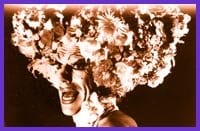In the heart of the intolerant expanse of northwestern Ontario, Thunder Bay is an oasis of queer culture. And locals say it’s the isolation that brings them together.
“If you live in North Bay or Sudbury you can go very easily to Toronto,” says Paul Morralee, founder of the local group Out And About. “We have to rely on ourselves.”
He says that Thunder Bay doesn’t have the luxury of deferring to a larger metropolis to provide a safe space to express same-sex affection. Those looking to escape to the big city are faced with a four-hour drive to Duluth, Minnesota, an eight-hour drive west to Winnipeg, or the 16-hour trek to Toronto.
Morralee suggests an extension to the city’s slogan to more accurately represent their situation: “Superior by nature – but cut off from reality.”
Out And About was formed in 1997 and holds mixed-gender social events once a month.
“In Thunder Bay if too much tried to happen with just the lesbian community or the men’s community, it wouldn’t happen at all,” says Jenn Metcalfe, Out And About member and the founder of the Lakehead University Pride Centre. “The only way that things succeed and grow is when we work together.”
The latest talk is on the possibility of a Thunder Bay Pride celebration for the year 2000. But while the idea has caught the community’s imagination, no one has stepped forward to head up the project that would involve a large dose of public exposure.
While Thunder Bay’s queer community is alive and kicking, finding an in could be tricky. Out And About’s events are members-only. And if it weren’t for the traffic, the only queer bar in town might be mistaken for an abandoned building.
The Back Street Klub is an unmarked building on Cumberland St. The windows are covered up and the storefront is painted black. But despite its unwelcoming exterior, the crowd inside is friendly and the bartender is charming.
David Belrose, the education coordinator for the AIDS Committee Of Thunder Bay says that the secrecy surrounding the Back Street is reminiscent of the socials held in the ’80s by the now extinct Gays, Lesbians And Bisexuals Of TB. Out of safety concerns the advertisements would simply state the address as “the usual Fort William location.” Newcomers would have to ask around to get the details.
Belrose says that many find their way into Thunder Bay’s queer community by way of the AIDS committee. Although only roughly 20 percent of their clients are gay, the organization provides volunteers and staff with a queer-positive space to be out in. In addition, Belrose co-facilitates Northern Pride, a coming out group for youth.
Belrose says that he’d rather work for a strong and safe community at home than deal with the insane pace of Toronto life. He left Thunder Bay to attend university in Toronto, and to serve time in the Canadian Armed Forces. But the call of home was strong enough to lead him back to the northern shore of Lake Superior.
“I found myself at Yonge and Bloor at five o’clock in the afternoon one day and I said, ‘What the hell am I doing? This is not a civilized way to live.'”
He hopes that his work can give local youth the option of staying.
“It’s about letting people feel good about themselves from early on so that they wouldn’t have to move away or would consider coming back.”
But 18-year-old Northern Pride member Andrea Cosgrove says that nothing could keep her in Thunder Bay. She plans to leave to attend college elsewhere in the province.
Fifteen-year-old Sara C intends to follow suit.
“You can’t be out here,” she says. “There’s no place for gay teens to go and be themselves.”

 Why you can trust Xtra
Why you can trust Xtra


